Artist Nicholas Harding talks about how he became interested in portraiture, and his motivation in painting Hugo Weaving.
This video was produced with funds donated by Tim Fairfax AC.
Artist Nicholas Harding talks about how he became interested in portraiture, and his motivation in painting Hugo Weaving.
This video was produced with funds donated by Tim Fairfax AC.
Becoming a painter takes a... I mean it's a hell of a journey. I started off by drawing people, so in my early teens I was drawing my classmates and then thought well, I might try to actually use some paint. And mum and dad had lots of art books and reproductions of very well known painters around the house: Turner, Van Gogh, Toulouse-Lautrec, Vlaminck. There was something about the way they really optimised the quality of painterly matter. They drew with it. So that was the thing that really pulled me in.
It wasn't until I got to my early 30s I really started to focus and realised this is the main game, this is what I want to do. So it's really been one painting leading to another. But every one of them – whether it's a failure or a mediocre success or an outstanding success – each one leads you to the next. And pretty much that's how it continues.
There's a motivation initially to paint a portrait that comes from observing someone, and they're unaware of that observation. And as soon as you ask them to sit for you they become aware of the observation so they become a little bit self-conscious. So you have to really work through that and somehow find that unguarded moment that will hopefully appear.
I knew Hugo initially, as we all do, through his work. And then his daughter and our son were in the same year at school. When we initially met I said 'oh one day would you be interested' and he went 'oh, maybe' – because he actually doesn't like making himself the centre of attention.
This was at home, in his house. It was the private, quiet Hugo. I didn't want to paint the famous persona, because that wasn't the Hugo I'd come to know. I'd come to know a more reflective person.
This was the second sitting we did, and I was drawing at the house. And there was a moment where he was at ease on the couch, and while we were talking, to collect his thoughts – or maybe because he was bored with sitting, because it can be extremely boring – his eye would just wander out through the courtyard door windows, to the courtyard. There's a beautiful 150-year-old jacaranda out there, and a garden – and space, sky. So you know you could see his thoughts traveling. And that just seemed a quiet, reflective moment that created the unguarded moment that I was seeking.
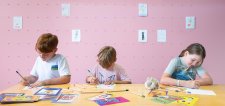
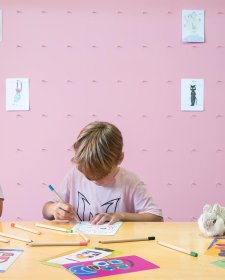

Drop into the Gallery any time for free creative activities inspired by artist Thom Roberts and his exhibition, The Immersive World of Thom Roberts.
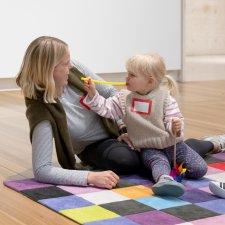
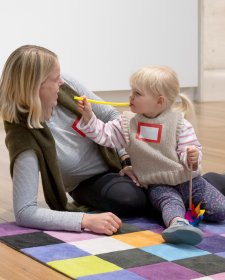
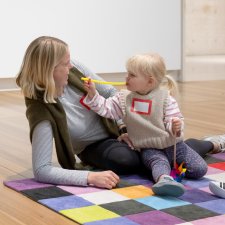
Join us for Portrait Play these school holidays as we explore portraits and music. Come and meet the people that live on our walls, discover musical instruments hidden in the portraits and get creative on your journey through the galleries.

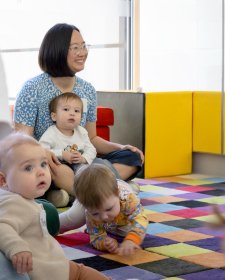

Do we have a treat for the smaller humans in your life! Little Faces is for babies and toddlers (with their grown up) to play, sing and have fun discovering a portrait together.